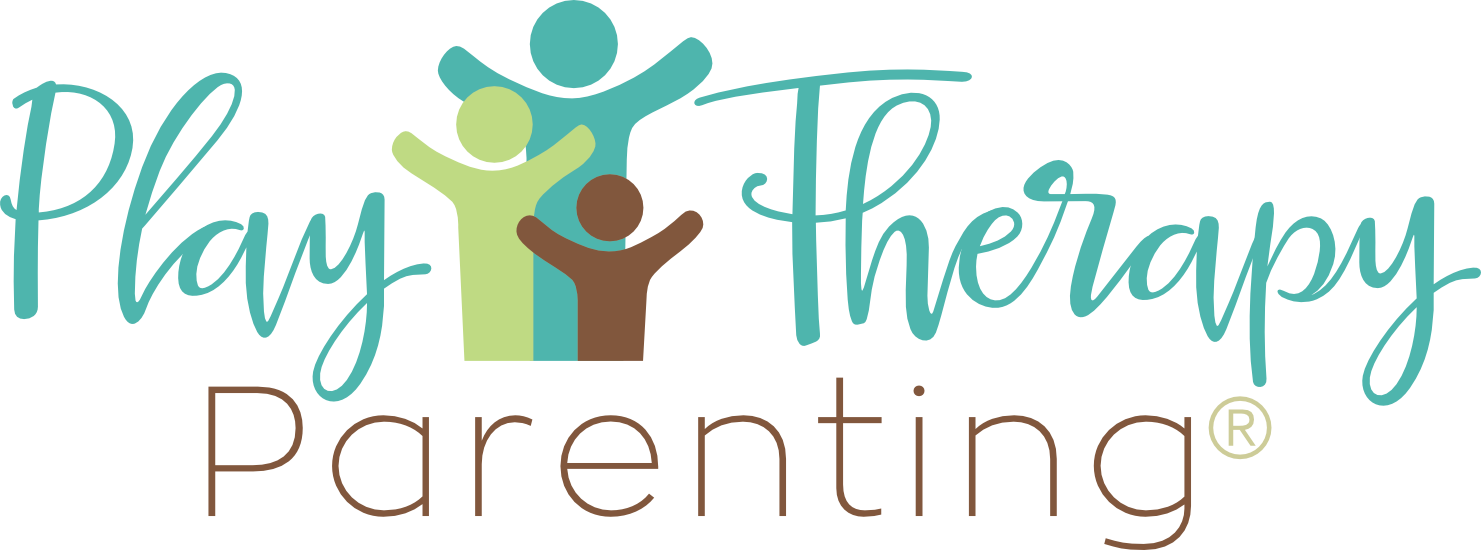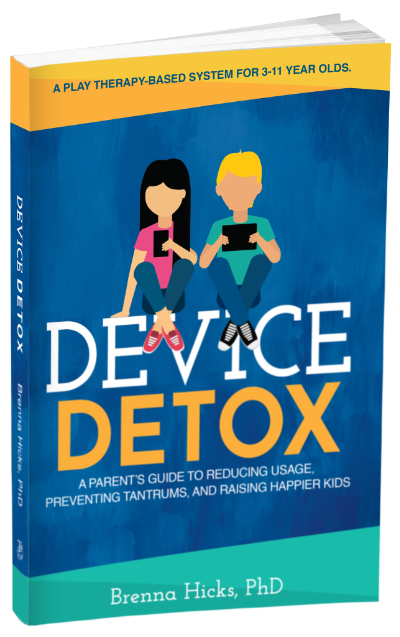Adding Structure to your Summer Prevents Behavior Issues
Podcast Transcript
Hi, I’m Dr Brenna Hicks, The Kid Counselor. This is the Play Therapy Parenting Podcast where I give you insight, awareness, and enlightenment about your parenting and your relationship with your kids. In this episode, we are talking about summer structure and how creating structure for the summer prevents behavior problems in your home and with your kids. This is something that actually was made very real to me several weeks ago. We were newly into summer, it was the end of the first week, and I have spent years helping parents create summer schedules. I advocate for them. I talk about the benefits, I know how important they are. And a week into summer, we hadn’t created one. And it just hit me and I just very clearly realized at the end of that first week, ‘things have been a little bit rough and I’m just not really sure; it doesn’t seem to be as smooth as I would hope.’ And the light bulb moment, I call them aha moments, it went off for me and I said, “We’ve had no structure this entire first week” and that became the catalyst for creating a summer structure and a schedule. And that is so important because I suspect – we’re towards the end of June now – so I suspect kids have been home about a month or so and you might be at the point where your kids are making you a little bit nuts. There are so many parents that are still working from home, or one parent is mostly at home while the other parent is working out of the home. And it takes a lot of effort to occupy children for those hours that they are normally in school. And if you find that there are conflicts, and there’s some arguments, and there’s some frustrations on both ends. Your children are frustrated. You’re frustrated. If there’s been some difficulty, I suspect it’s lack of structure. That’s a contributing factor.
So in this episode, we’re going to talk through summer structure in three main topics. So the first is how much kids crave structure and how it creates an environment where they’re able to thrive. Sometimes we forget how much they really do need a schedule and so we need to provide that for them, especially in the summer when there isn’t as much of one. The second thing we’ll chat about is there are three common reasons for misbehavior. I’ve actually talked about this a lot in previous articles and videos and podcasts, and we will look at those three reasons as also contributing factors to difficulties over the summer. And then finally, when there is a structure and when there is a schedule, it is better for adults, and the parents, and the kids. This isn’t just about creating a structure for the children. It is about creating an environment in the home where everybody is happier.
The path to calm, confident, and in control parenting starts now. So as we talked about just a little bit ago, kids really do need and crave structure. They do much better. They have a better understanding of expectations when there is a schedule involved. That is why the academic setting is so scheduled. And so I challenge you to ask your kids, “hey, what time of day did you have music? When was your lunch? When did you go for recess? When do you have science class?” They will be able to tell you without missing a beat when that happened in their school day, because everything was consistently scheduled. So imagine you have 180 days a year where your entire day is mapped out for you. You get in a rhythm and you get in a consistent pattern of, ‘I know what comes next and I know what will happen at two o’clock and I know on Tuesdays, I do this.’ Then summer hits, and while there’s a little bit of celebration of the freedom of summer; of course, for the first few days, it’s nice to have nothing to do just to kind of regroup and recover from the school year. But as soon as the daily grind of summer hits, they’re used to structure and schedule and pattern. And so to have nothing in place, it can really leave kids floundering and it leaves opportunity for them to get in negative moods and have negative attitudes. And it can create conflict when they really need something that’s not being provided. So they thrive when there is structure and that’s why this is so helpful.
Second thing, we talk a lot about kids having behavior issues and their misbehavior and their dysregulation, and how it affects the family. And there are three main reasons why children struggle behaviorally. I’ve talked about this, in earlier episodes and in earlier videos and articles; you always want to rule out tired, hungry, or bored. If a child is struggling to obey, struggling to comply, struggling with their attitude, struggling with just functioning in any given moment, think to yourself: “Are they tired, hungry or bored?” And usually you can pinpoint one of those three culprits. Every once in a while, none of those three are true, and then there’s something more going on. But tired, hungry and bored are your go to, to rule out issues and those are easily fixable too. So it’s easy to say, “Okay, you know what? I know it’s time for you to eat, let’s have some food and then everything gets better.” My son specifically, we are pretty attuned to when he’s hungry. We know it. And so will say, “Okay, it’s time to eat.” And often he’ll say, “I’m not hungry” and we’re like, “Okay, well I know you feel that you’re not hungry, but it’s time to eat. So we’re going to eat.” And then three or four bites in, it’s like all of the angst goes away and it’s like, “Okay, there we go, he’s back.” So there’s definitely that rule out process. But here’s why I bring that up – when there is no structure, when there’s no schedule, it’s really easy for kids to be in one or all of those states. They’re used to eating breakfast at a certain time. They’re used to having snack at a certain time. They’re used to having lunch at a certain time during the summer. If they’re going four hours without eating, that never happens during the school year.
They’re also never left for hours with nothing to do during the school year. They also might be staying up later than they normally do and maybe waking up earlier because they’re excited to go play. So maybe they need more rest and usually we’re stricter about bedtimes and routines during the school year, not so much during the summer. So you can see tired, hungry and bored. Those are really helpful things to keep in mind when a child is struggling and you can mitigate those things by having structure. We have a very specific bedtime for our son even during the summer. It’s an hour later than it is during the school year, but it is still a very consistent and clear bedtime. And we make sure that he stays on schedule for his eating and we make sure that we have activities for him so that he’s not bored. So rule those three things out just so that you can have a go to tool for when there’s misbehavior, but also keep in mind if there’s a structure for the summer, you can prevent most of those issues.
And then finally, when you think about having a structure, it isn’t just about providing that for your children and that they will be happier. There is a balance of power and control when a structure is established for the summer. And what I mean by that is, if you know that the child needs to be occupied between nine and five during the summer, you and the child can collaboratively decide what that schedule looks like, so you get control and a measure of what’s going to happen throughout the day. But the child also has buy-in, ownership, and some control over parts of the day. And so the easiest way that I can describe this, I typically draw this out or I have something in front of parents when I’m with them face to face in the office, so you’re gonna have to visualize this with me. But if you think about a daily calendar, if you have your our blocks from 9 to 5, and you know that you need to fill that entire schedule for your child during the summer, there are going to be parts of the day that are non-negotiable. In other words, you have to eat breakfast between 9:00 and 9:30, you have to have lunch between 12:00 and 1:00, you have to – maybe you work in the mornings from 9:00 to noon and you’re in meetings all morning. They have to be able to have something to do during 9 to 12 that doesn’t involve you. Maybe you go to work at 3pm and so from 3:00 to 5:00 they’re going to have to do something without you. So there are going to be parts of the schedule that you will be able to say are non negotiable facets of the day. In other words, 10:00 to 11:00 is silent reading because I have to have a call, or I have to be doing something for work, or I have to get the baby down for their nap, or whatever that scenario is. You can block out portions of the day and find activities that make sense for that hour. So it’s silent reading, or it’s doing a puzzle, or it’s playing a board game with a sibling, or whatever that looks like.
But then there will be other parts of the day that you will leave open; for example, maybe from 1pm to 3pm there’s nothing that has to take place during that time. So what I’ve encouraged parents to do is make a whole bunch of either sticky notes or magnets, where you’ve written options in and you let the child, at the start of the week, slide those activity options into those holes so that they have some buy-in to the structure. In other words, you might have swimming, bowling, bike riding, going to get ice cream. You know, you might brainstorm. Okay, let’s come up with 10 activities that I’d be okay with doing between those open hours on the schedule and then at the beginning of the week you say, “okay, I wonder what you’d like to do monday from 1 to 3.” “Well, Monday I want to go swim.” Okay, then you slide swimming up into that spot Tuesday. What would you like to do? “I want to bike ride.” So you slide bike riding up. So as you can see it gives you a power balance, it gives the child of power balance. Everyone is in agreement. Everyone is happy with the structure and you’re not enforcing something that the child hasn’t already committed to. And the child doesn’t fight when they have some buy in and some control.
So to me this is a sanity tip. So you know, we don’t want to be frustrated. I’ve had so many parents over the years, three weeks into summer say, “oh my gosh, is summer over yet?” And I’ve had parents say I just can’t wait for school to start again. And that always hits me with such sadness, really heaviness maybe, in my heart that your children are gone all year long. And you finally have a long stretch of the year where you can spend more time with them, and you get to pour into them, and invest in them, and have that long stretch of time throughout the day that you don’t get during the school year and you’re itching for them to be out of your presence again.
And I don’t think that it’s intentional. I think it’s lack of equipping, and so I want you to be equipped. I want you to be able to say we’re having an awesome summer together because we have structure, and because we’re handling the issues that will cause behavior problems. And we’re having our children contribute to the schedule so that they’re happy with it too. That’s best case scenario. But it keeps everyone sane and it keeps everyone functioning as a happy family. So remember they thrive with schedule, and structure, and knowing what the expectations are. They’re used to it. So it’s difficult for them to navigate without it during the summer. Rule out the normal: tired, hungry and bored. Know that a schedule already helps address those things, and make sure that you’re including them in the schedule so that there’s a balance of power and control.
So now that you have this new tool in your toolbox, now that you’re aware of creating a summer schedule, putting some structure into your weeks, I challenge you to come up with a board. It can be a printed calendar, can be a magnet calendar, it can be a chalkboard calendar, whatever you have access to, whatever you can find in the store. Give yourself at least a week at a time. It might be better for you to do a month at a time. However it’s going to best fit your family. But get yourself a calendar, give the windows where there is a non negotiable timeframe of things that have to get done, write those in a permanent fashion and then give your kids the opportunity to change and modify daily what they want to do based on your already agreed upon activities. You’re not going to say, “I wonder what you’d like to do this summer” and have them throw out, “I want to fly to Alaska” so you want to make sure you’ve already come up with options that make sense for you. “We can go get ice cream, we can go swim, we can go bowling, we can throw the baseball, we can whatever makes sense for you – go to the park, go to the playground, go see a movie.” There’s all kinds of options and then give children those windows that are free the opportunity to decide what that looks like on a daily and weekly basis.
I think you will find huge success with this. So many parents have used this and had great things to say about it. And in my own home, even since we implemented this schedule, things have gone much smoother. Our son looks at the schedule, he knows what he’s supposed to be doing at those given times and we have all felt that it’s just smoother and easier when we all know exactly what is happening throughout the day. So shoot me an email if you have questions, comments. If you have success stories you want to share. I’d love to hear them [email protected] and make sure you go to thekidcounselor.com/newsletter to sign up for my newsletter so that you always are aware of what I’m handing out to you. In a future episode, I read an article that talked about loving children but hating being a parent. And you know that I couldn’t just see that headline and move on. So I looked at that article, took a lot of time to kind of unpack that in my own head, and I’d like to share some insights and thoughts with you in a future episode. So look forward to that. And thank you as always for being a part of the Play Therapy Parenting Podcast family. We’ll talk again soon. Bye.



